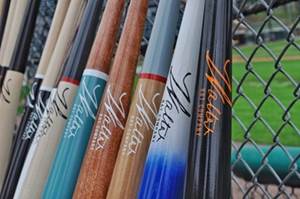Load More Tools On Your CNC Lathe's Turret
Most shops accept the tooling limitations of their CNC lathes as a fact of life-something that cannot be changed and something to get around. However, one shop took a fresh look at the problem and came up with a way to increase the number of rotary tools that a turret can accommodate.
How many times have you wished you could add just one or two more rotary tools on the turret of your CNC lathe? Probably the same number of times that you had to set up one or more additional machines for secondary operations because you could not machine the part complete in one setup on the lathe. Most shops accept the tooling limitations of their CNC lathes as a fact of life—something that cannot be changed and something to get around. However, one shop took a fresh look at the problem and came up with a way to increase the number of rotary tools that a turret can accommodate.
The development was born of necessity. Foxwood Machine, Inc., a job shop in Rowley, Massachusetts, was presented with an opportunity to produce a number of relatively simple parts in large quantities for an important customer. Problem was, most of the shop's CNC lathes had limited tooling capacity and were slow to index. Management was concerned that the parts would require secondary machining, which would increase their cost and prevent the shop from quoting competitive prices. The shop did not want to turn down what it knew would become significant business. It took a look at the limited tooling capacity and slowness of some of its CNC lathes and came up with the Turretgang, a toolholder that effectively doubles and triples the number of hole-making tools that the turret can accommodate at one time.
The Turretgang toolholder mounts in the OD toolholding locations on the turret. It permits up to three tools to be mounted in each turret location instead of only one, greatly increasing the number of tools that can be used on a given job. Without the toolholder, only one rotary tool can be installed in each turret tool position, and when the tool has completed its operation the turret must retract, index to the next turret tool position, and advance to the part—a process that can take several seconds on some lathes. With Turretgang, however, the user can perform as many as three hole-making operations—for example, center drilling, drilling and counterboring—from the same turret location, freeing up the other turret locations for still more hole-making operations.
The toolholder is aptly named, because it brings some of the advantages of gang tooling to CNC lathes with conventional turrets. Instead of indexing to present the next tool in the cutting sequence, the turret simply slides along the X axis, presenting the next tool in the toolholder to the work with the speed of a gang-tooled lathe. The significant reduction in tool-indexing times means corresponding reductions in part cycle times. According to the manufacturer, the user can expect cycle time savings of 0.5 to 2.5 seconds or more for each additional tool used per holder, depending on the age, size and movement distance of the CNC lathe involved.
Setup times can be reduced by leaving the toolholder in place on the turret and simply changing individual tools. Additionally, toolholders equipped with tools for a specific job can be stored and quickly installed for repeat orders.
All too often, a shop must run a job on the wrong machine because other, more appropriate machines are booked solid. The Turretgang toolholder improves a shop's production flexibility because it levels the capabilities of the shop's CNC lathes. Older lathes that might have been a poor choice for a particular job become much more productive because of the greater number of tools and faster tool indexing the toolholder provides.
The Turretgang handles most rotary tools: center drills, drills, reamers, taps and . . ."every round tool that you have," the manufacturer promises. The system is said to be ideal for machining parts 2 inches in diameter and smaller; however, larger parts can also be accommodated by installing only two tools in the toolholder instead of three. The toolholder is sold in two styles: one for channel-style turrets and another for block-style turrets. Standard toolholders are available for most popular CNC lathes. However, some lathe designs provide only enough clearance between the turret and sheet metal for a two-tool toolholder instead of the three-tool version.
Related Content
Automation Breakthroughs Revolutionize Precision Machining for Complex Parts
Marubeni Citizen-Cincom delivers custom solutions for the world’s most demanding precision manufacturing needs.
Read MoreVideo: Why a Production Machine Shop Started a Baseball Bat Company
A 153-year-old manufacturer of precision, metal pins recently started a side business creating custom wooden baseball bats. The reasoning behind establishing this new company is intriguing, as is how it has helped create a stronger bond with the local community.
Read MoreShop Sets its Sights on Precise Tool Alignment
A Wisconsin shop has found that visual tool alignment technology has improved tool life and surface finishes for its Swiss-type lathes while increasing throughput as well.
Read MoreShop Optimizes its Swiss-Turning Flexibility
Paramount Machine uses various Swiss-type lathes, some with a B axis, to produce parts more effectively than it did on conventional chucker lathes. Today, nearly every job under 1.5 inches in diameter runs across those machines even if the batch size is a mere 5 pieces.
Read MoreRead Next
5 Aspects of PMTS I Appreciate
The three-day edition of the 2025 Precision Machining Technology Show kicks off at the start of April. I’ll be there, and here are some reasons why.
Read MoreDo You Have Single Points of Failure?
Plans need to be in place before a catastrophic event occurs.
Read MoreA Tooling Workshop Worth a Visit
Marubeni Citizen-Cincom’s tooling and accessory workshop offers a chance to learn more about ancillary devices that can boost machining efficiency and capability.
Read More











.jpg;maxWidth=300;quality=90)








